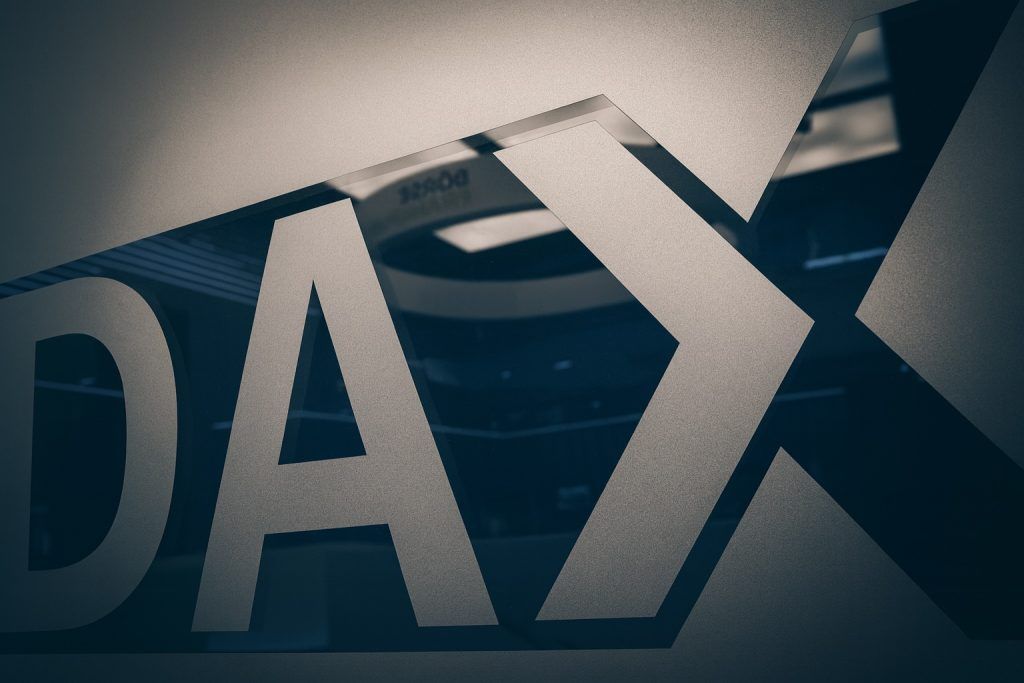- 30-Year Falls to ~6.27%: The average U.S. 30-year fixed mortgage rate slipped to 6.27%, down from 6.3% last week and 6.44% a year ago [1]. This marks the second straight weekly decline, bringing rates near their lowest level of 2025 [2] after they had climbed above 7% in January [3].
- High Rates Hurt Housing: Mortgage rates have remained above 6% since Sept 2022, fueling a housing slowdown [4]. Existing-home sales in 2024 sank to a nearly 30-year low, and sales so far in 2025 are still running below last year’s weak pace [5] [6]. Many buyers paused purchases awaiting lower rates, though recent rate dips spurred a modest uptick in refinance activity [7].
- Fed Eases, But Yields Stay High: The Federal Reserve cut its benchmark rate by 0.25% in September – its first cut of 2025 – and Fed officials signal two more cuts by year-end [8]. However, 30-year mortgages (~6.2%) haven’t fallen in tandem [9]. Analysts note home loans follow the 10-year Treasury yield (~4%), which remains elevated due to massive U.S. debt issuance [10]. As one economist warns, “only Congress can rein in the spending that keeps long-term yields — and mortgage rates — stubbornly high” [11].
- Outlook – Modest Relief Only: Most forecasts see mortgage rates hovering in the mid-6% range for now [12]. “Looking ahead… the likely bet is they are not going to fall much further,” says Bright MLS chief economist Lisa Sturtevant, adding that buyers who wait for dramatically lower rates “could find themselves facing higher prices but without an improvement in mortgage rates” [13].
- Advice for Homebuyers: Experts urge buyers to stay prepared and pragmatic. One CBS analysis advises “Get pre-approved right now” to strengthen your position with sellers [14]. At the same time, “don’t assume rates will keep falling,” since they “can easily tick back up” if market conditions change [15]. In short, take advantage of the recent dip cautiously rather than betting on a plunge below 6%.
Mortgage Rates Near One-Year Low After Fed’s First Cut
Mortgage rates have dipped to their lowest levels in about a year, offering American homebuyers a measure of relief after the steep run-up of the past two years. Freddie Mac’s latest survey shows the average 30-year fixed rate at 6.27%, down from 6.3% last week [16]. This is just above the year’s low (around 6.26%) reached a month ago and the lowest since early October 2024 [17]. By comparison, rates were roughly 6.44% a year ago and had peaked just above 7% in January [18], so borrowing costs are off their highs, albeit still high historically. The 15-year fixed mortgage also ticked down to about 5.52% [19], offering cheaper refinancing options for some homeowners.
Sam Khater, Freddie Mac’s chief economist, noted that borrowers are responding to the rate declines. These “consistently lower rates” have already driven an uptick in refinance activity, he said, and combined with rising housing inventory and slower home-price growth, the easing rates are “creating a more favorable environment for those looking to buy a home” [20]. In other words, conditions are slightly improving for buyers: more homes on the market, prices not climbing as fast, and mortgage payments a bit more affordable than a few months ago.
However, today’s rates are still double the record lows seen in 2021, and the improvement is incremental. “While lower mortgage rates have pulled homebuyers back into the market, many are still hesitant due to economic uncertainty and the affordability crisis plaguing the U.S.” [21]. Persistently high housing costs and broader economic worries (like job market jitters and a recent federal government shutdown impasse) continue to weigh on buyer confidence. Jiayi Xu, senior economist at Realtor.com, points out that housing affordability remains stretched: “Nationwide, buying power has declined sharply as home prices and mortgage rates continue to outpace income growth,” Xu said [22]. She cautions that without “substantial wage gains and improved financial stability,” purchaser sentiment will remain subdued [23]. In addition, uncertainty from the prolonged government funding showdown may further chill buyer enthusiasm – especially in regions heavy with federal workers facing paycheck disruptions [24].
High Rates Continue to Cool the Housing Market
The overall housing market is still feeling the effects of two years of rising interest rates. Mortgage rates have stayed above 6% since September 2022, when they jumped from historic pandemic-era lows into new territory [25]. That rate shock triggered a significant housing slump: sales of existing homes plunged in 2024 to their lowest level in nearly 30 years [26]. And 2025 hasn’t seen a rebound – year-to-date, home sales are running below 2024’s pace [27], indicating continued weakness in buyer activity.
With borrowing costs so high, many would-be buyers simply put their plans on hold. Recent data underscore how the market has cooled. According to real estate brokerage Redfin, pending home sales in September were 1.3% lower than a year earlier, and the typical home now sits on the market for 48 days before selling – the longest September sales timeline since 2019 [28]. Homes are taking longer to find buyers as house-hunters “aren’t budging” until financing gets cheaper [29]. At the same time, homeowners who previously locked in ultra-low 3–4% mortgage rates have been reluctant to sell and give up those loans, further limiting housing supply. (Realtor.com estimates about 80% of homeowners with a mortgage have rates below 6%, and over half have sub-4% rates [30] – a major reason refinancing or moving only makes sense if rates drop much more.)
On the bright side, some housing metrics are slowly improving for buyers. As noted, inventory of homes for sale has grown in many markets, partly because higher rates have curbed bidding wars and price gains. In fact, Redfin reports the number of homes on the market has risen from last year’s lows, and home price growth has moderated to a more normal pace [31]. The combination of slightly lower rates, more choice of listings, and flattening prices means buyers have a bit more negotiating power now than during the frenzied market of 2021–2022 [32]. “Increased housing inventory and slower house price growth” are finally tilting the market somewhat back toward buyers, said Freddie Mac’s Khater [33]. There are also signs of life in the mortgage market: even though total mortgage applications remain muted, the share of loans for refinancing has ticked up to about 54% of all applications (a slight increase) as some owners seize the chance to lower their rate from recent peaks [34]. And more house hunters are exploring adjustable-rate mortgages (ARMs) – which offer lower initial interest – accounting for roughly 9% of new loan applications [35].
Still, affordability remains a major challenge. By one estimate, a typical family today would need to spend over 20% of its income on mortgage payments for a median-priced home – versus closer to 12%–15% during the sub-4% rate era. Xu emphasizes that without meaningful income growth, many renters and first-time buyers will continue struggling to qualify. In some costly markets, the recent dip to ~6.3% hasn’t moved the needle enough: monthly payments on a median home are roughly $400 higher than a year ago, even as home prices have leveled off. Thus, the housing market’s recovery likely hinges on mortgage rates declining more substantially – or incomes catching up – to restore broader affordability.
Fed Policy vs. Mortgage Rates: A Disconnect
Why are mortgage rates still stubbornly high despite the Federal Reserve finally starting to cut interest rates? This question is perplexing homebuyers who expected relief once the Fed began easing. In mid-September, the Fed delivered its first rate cut of 2025, lowering the benchmark federal funds rate by 0.25 percentage points after a year of holding steady [36]. Fed officials, including Governor Michelle Bowman, have signaled they “continue to see two more cuts before the end of this year,” likely at the late-October and December meetings [37]. Markets are indeed pricing in quarter-point rate reductions at those upcoming Fed meetings [38].
Normally, when the Fed cuts short-term rates, borrowing costs for businesses and consumers – including some mortgage costs – tend to fall. And in fact, mortgage rates did begin drifting down in July in anticipation of the Fed’s policy pivot [39]. However, so far the impact on long-term home loans has been limited. The average 30-year fixed rate is still around 6.2%–6.3%, essentially higher than it was 12 months ago [40]. Many homebuyers are asking: with the Fed finally in easing mode, why aren’t mortgage rates dropping more dramatically?
The answer lies in the bond market. Mortgage rates are closely tied to the 10-year Treasury yield, not directly to the Fed’s overnight rate. Lenders peg home loan rates to what investors demand on 10-year U.S. government bonds (since most 30-year mortgages are paid off or refinanced within ~7–10 years on average). And those Treasury yields have stayed elevated – or even risen – despite the Fed’s cuts, due to supply and demand pressures in the bond market. As the Associated Press explains, mortgage rates “generally follow the trajectory of the 10-year Treasury yield” [41]. Indeed, the 10-year yield was about 4.02% this week, only slightly down from ~4.14% a week ago [42], and still near its highs for the year.
What’s keeping long-term yields high? A big factor is the U.S. government’s massive borrowing needs. Economist Paul Mueller of AIER points out that surging federal debt (now roughly $36 trillion) has led to a glut of Treasury bonds on the market [43]. Every year, hefty budget deficits force the Treasury to issue trillions of dollars in new bonds [44]. With so much supply, investors demand higher yields (lower bond prices) to absorb it all – pushing up the baseline for mortgage rates. Even as the Fed has eased off, “the 10-year Treasury yield [is] up (around 4.0%) even as the Fed funds rate fell,” Mueller notes [45]. In his view, fiscal policy is the culprit: “only Congress can rein in the spending that keeps long-term yields — and mortgage rates — stubbornly high” [46]. In short, without federal deficit reduction or other changes to bond demand, there’s a limit to how low mortgages can go, Fed cuts or not.
Other forces are at play as well. Inflation expectations influence bond investors, and while inflation has come down from 2022’s peaks, it’s not fully tamed. The latest data show U.S. CPI inflation ~3% – much improved, but still above the Fed’s 2% goal. If bond traders worry that inflation could flare up again (eroding their returns), they insist on an added yield premium. There are some potential sparks on the horizon: the return of trade war tensions is one. The Fed itself warned it could “change course if inflation jumps” amid the revived tariffs and trade escalation with China by the Trump administration [47]. New import taxes or geopolitical shocks could drive prices higher, which would likely send bond yields climbing and mortgage rates following suit.
Recent history illustrates that Fed rate cuts don’t guarantee cheaper mortgages. Last fall (late 2024), the Fed cut rates for the first time in years – yet mortgage rates actually rose afterward [48]. In fact, they “marched higher, eventually reaching just above 7% in January” 2025 [49], despite the Fed’s initial cut. This counterintuitive move occurred because investors feared the Fed was “behind the curve” on inflation, and a flood of government spending (along with sticky inflation data at the time) drove long-term yields up. The lesson: long-term mortgage rates have a mind of their own, driven by global bond markets and fiscal trends in addition to Fed policy.
To truly get mortgage rates meaningfully lower, a combination of factors would likely be needed: further sustained declines in inflation, more cautious fiscal policy to alleviate pressure on bond markets, and continued signals from the Fed that it will support the economy without letting prices spiral. Barring that, mortgages may remain in the 6% range even if the Fed cuts a few more times. As Mueller bluntly puts it, Fed rate cuts alone “can’t tame mortgage rates without fiscal restraint” [50].
On a positive note, the recent pullback in Treasury yields (down from ~4.8% a month ago to ~4.0% now) has at least stopped mortgage rates from rising further. And it’s not just home loans feeling the effect: lower yields have cheered Wall Street, sending risk assets higher. The broad S&P 500 and Nasdaq stock indices touched all-time highs in early October (with the S&P reaching 6,753 on Oct. 8) [51] amid optimism that the Fed’s pivot will boost economic growth. In mid-October, all 11 sectors of the S&P 500 moved higher in a single day, led by rate-sensitive groups like real estate (+1.5%) and utilities [52]. Investors are effectively betting that interest rate relief is on the way – a boon for both high-growth tech stocks and housing-related shares.
Will Mortgage Rates Keep Falling – and What Should Buyers Do?
How much lower can mortgage rates go? Many economists project only a modest decline in the coming months. The consensus is that the 30-year fixed rate will hover in the mid-6% range through the end of 2025 [53], assuming no major economic shocks. Freddie Mac itself expects rates to meander around current levels, given that recent Fed cuts have had limited impact on longer-term loans. Some optimists note that if inflation continues to cool and recession risks rise, the 10-year yield could drift down further – potentially pulling mortgage rates under 6% in 2026. Indeed, futures markets are pricing in at least one more Fed rate cut in early 2026 [54]. But any such drop is likely to be gradual. Lisa Sturtevant, chief economist at real-estate listing service Bright MLS, cautions that predicting mortgage rates is tricky in this environment. “Looking ahead to the rest of the year, it is difficult to forecast where rates will go,” she admits, “but the likely bet is that they are not going to fall much further” [55]. Her advice to buyers: don’t count on a return to 5% or 4% rates anytime soon. If you “wait for lower rates,” you could end up paying higher home prices later without any improvement in financing costs [56].
Other housing analysts echo that sentiment. With the economy still growing (if slowly) and the Fed trying to engineer a soft landing, it’s possible mortgage rates simply stabilize around 6%–6.5% for an extended period. Laurie Goodman of the Urban Institute notes that in the 1990s and early 2000s, 6–8% mortgage rates were common and didn’t prevent home sales – it was the rapid change from 3% to 7% that shocked today’s market. Now that buyers and sellers have had time to adjust, even a plateau at mid-6% levels could gradually bring some buyers back, especially if incomes rise or home prices see slight corrections.
For prospective homebuyers, the current environment calls for a strategic approach. Mortgage rates are down from their peak, but they may not decline much more in the near future. That means trying to perfectly “time” the market for the lowest rate could backfire. Instead, experts recommend focusing on what you can control in the homebuying process. A CBS News MoneyWatch report advises buyers to get pre-approved for a mortgage now, while rates are in this favorable window [57]. A pre-approval will tell you how much you can borrow and locks in a rate quote for a limited time, insulating you if rates bounce up again. It also makes you a more credible bidder – “Many sellers won’t even deal with a buyer” who lacks a formal pre-approval, the CBS analysis notes [58]. In today’s market, sellers are more willing to negotiate with buyers who have their financing lined up.
At the same time, don’t become complacent or assume rates will keep falling steadily. It’s “understandably tempting” to wait for a better deal, given that rates were around 7% just a few months ago and have eased to ~6.3% now. But history shows mortgage rates don’t move in a straight line. They “can easily tick back up” if economic conditions shift [59]. “Don’t assume rates will keep falling,” the CBS Managing Your Money column stresses [60]. For example, in late 2024, rates temporarily plunged to a two-year low right before a Fed meeting – only to surge again afterward [61]. If you’re holding out for, say, 5.5%, you might end up disappointed or miss out on buying the home you want.
The bottom line: The recent dip in mortgage rates is a welcome break for homebuyers and homeowners, but it’s not a return to the rock-bottom financing of a few years ago. Barring a sharp economic downturn or major policy changes, mortgages are likely to stay in the 6% range in the coming months [62]. Buyers should view the current ~6.3% rates as perhaps the best we’ll see for a while and plan accordingly. That means getting one’s finances in order – improving your credit score, saving for a larger down payment to lower your loan-to-value, and shopping around with multiple lenders to secure the most competitive rate and terms available. With housing supply gradually improving and sellers increasingly willing to negotiate, those prepared buyers who act now may find opportunities to finally land a home – even if the mortgage rate they lock in is around 6%, not the 3% of yesteryear.
Looking ahead, all eyes will remain on the Federal Reserve’s next moves and the broader economy. If upcoming inflation reports stay benign and the Fed proceeds with another rate cut, we could see incremental declines in mortgage rates – perhaps inching closer to (or even just below) 6% by early 2026, according to some forecasts. Conversely, any surprise jump in inflation or big government spending news (e.g. new fiscal stimulus or geopolitical conflict) could send Treasury yields climbing and quickly reverse the downtrend in mortgage costs [63]. As one market strategist put it, the path of rates from here is a “tug of war” between easing monetary policy and tightening financial conditions elsewhere. For now, buyers and homeowners can celebrate that rates are off their peak, and take sensible steps to capitalize on the improved environment – all while staying vigilant, since the only certainty is that the mortgage market can change as fast as the headlines.
Sources: Freddie Mac via Fox Business [64] [65]; AP News/ABC [66] [67]; TS2.Tech economic analysis [68] [69]; CBS News MoneyWatch [70] [71]; Realtor.com and Redfin data via media reports [72] [73]; additional reporting by Reuters and Bloomberg.
References
1. www.foxbusiness.com, 2. apnews.com, 3. apnews.com, 4. apnews.com, 5. apnews.com, 6. apnews.com, 7. www.foxbusiness.com, 8. ts2.tech, 9. ts2.tech, 10. ts2.tech, 11. ts2.tech, 12. apnews.com, 13. apnews.com, 14. www.cbsnews.com, 15. www.cbsnews.com, 16. www.foxbusiness.com, 17. apnews.com, 18. apnews.com, 19. www.foxbusiness.com, 20. www.foxbusiness.com, 21. www.foxbusiness.com, 22. www.foxbusiness.com, 23. www.foxbusiness.com, 24. www.foxbusiness.com, 25. apnews.com, 26. apnews.com, 27. apnews.com, 28. ts2.tech, 29. ts2.tech, 30. apnews.com, 31. www.foxbusiness.com, 32. www.foxbusiness.com, 33. www.foxbusiness.com, 34. apnews.com, 35. apnews.com, 36. ts2.tech, 37. ts2.tech, 38. ts2.tech, 39. apnews.com, 40. ts2.tech, 41. apnews.com, 42. apnews.com, 43. ts2.tech, 44. ts2.tech, 45. ts2.tech, 46. ts2.tech, 47. apnews.com, 48. apnews.com, 49. apnews.com, 50. ts2.tech, 51. ts2.tech, 52. ts2.tech, 53. apnews.com, 54. apnews.com, 55. apnews.com, 56. apnews.com, 57. www.cbsnews.com, 58. www.cbsnews.com, 59. www.cbsnews.com, 60. www.cbsnews.com, 61. www.cbsnews.com, 62. apnews.com, 63. ts2.tech, 64. www.foxbusiness.com, 65. www.foxbusiness.com, 66. apnews.com, 67. apnews.com, 68. ts2.tech, 69. ts2.tech, 70. www.cbsnews.com, 71. www.cbsnews.com, 72. ts2.tech, 73. apnews.com









